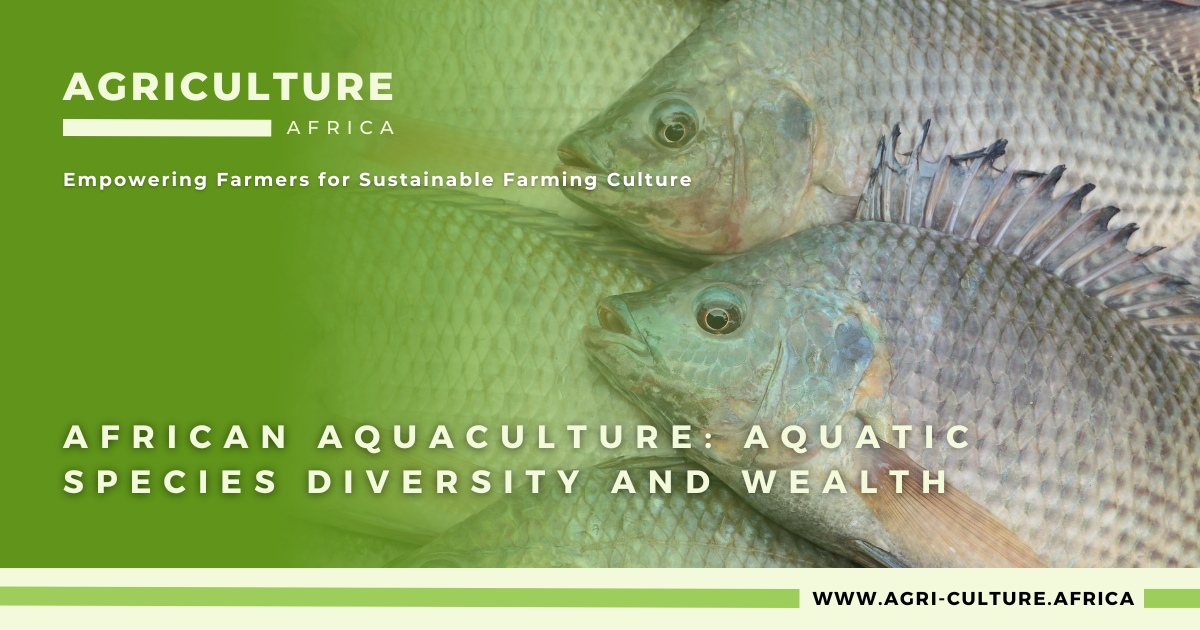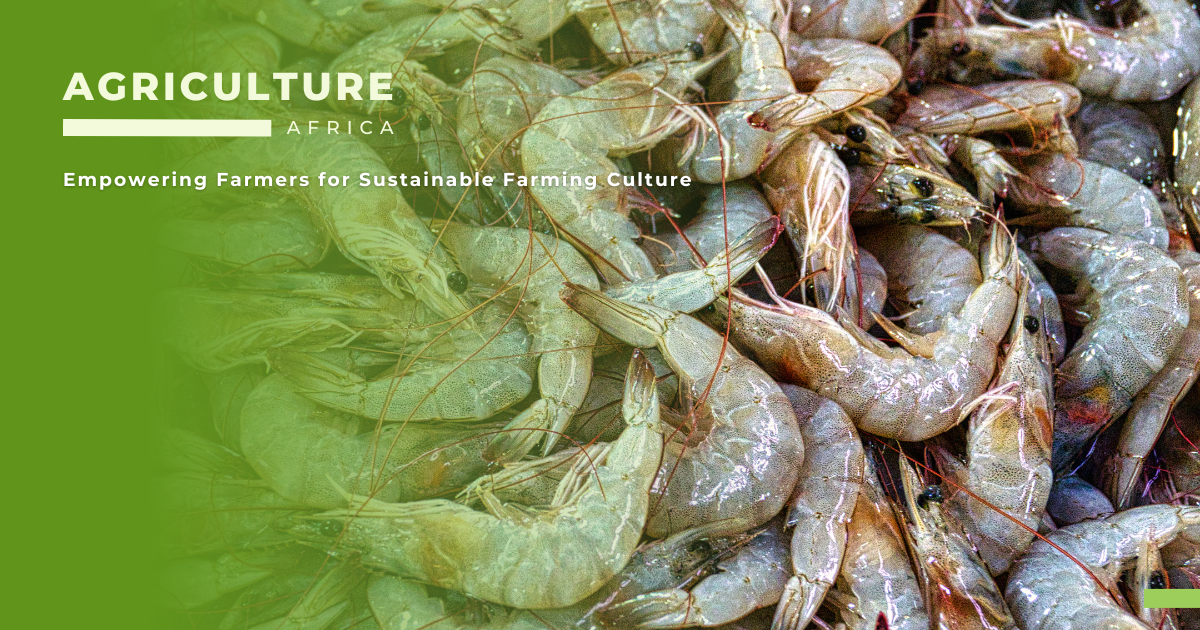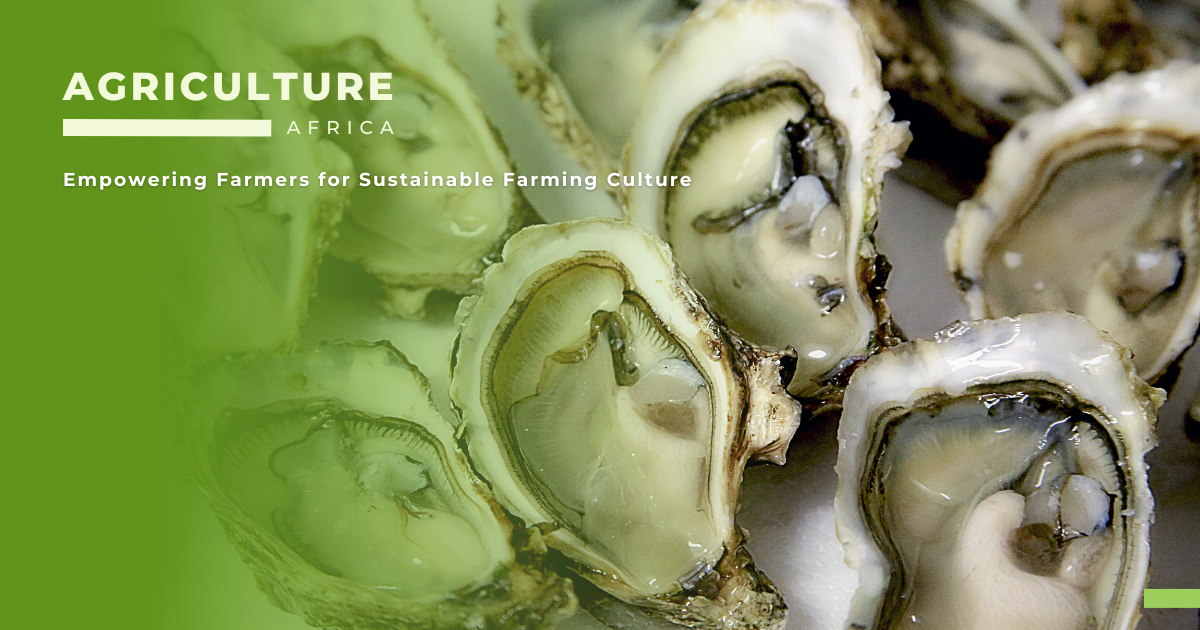
Empowering African Farmers for Sustainable Farming Culture
African aquaculture has enormous potential to help the continent’s economic development and food security. Fish, crustaceans, and mollusks are the most commonly raised species in African aquaculture, and they provide a variety of nutritional and commercial benefits. Despite the industry’s challenges, efforts to improve the regulatory framework, expand access to finance and technical support, and develop infrastructure to support the industry’s growth are ongoing. By overcoming these challenges, African aquaculture has the potential to become an important driver of economic growth, job creation, and food security on the continent.
Fish are the most commonly raised species in African aquaculture, and a variety of species are raised, including tilapia, catfish, carp, and trout. Due to its hardiness, rapid growth, and ability to feed on a variety of feed sources, including plant-based feed, tilapia is the most commonly farmed species in Africa. Tilapia is a popular food fish with a well-established nutritional value. It’s high in protein, low in fat, and high in vitamins and minerals like omega-3 fatty acids. Tilapia is also a low-cost protein source, making it an important food source for many Africans.
Catfish is yet another popular fish species raised in African aquaculture. Catfish is a tough species that, like tilapia, can eat a variety of foods, including plant-based feed. Catfish is high in protein and low in fat, making it a healthy food choice. Carp and trout, while less common than tilapia and catfish, are also raised in African aquaculture.

African aquaculture also raises crustaceans such as prawns and crayfish. Prawns are a popular crustacean that are raised in ponds or tanks. Prawns are high in protein, low in fat, and high in minerals such as zinc and selenium. Prawns are another delicacy with a high market value that makes them an appealing option for farmers. Another crustacean that is commonly raised in African aquaculture is crayfish. Crayfish is high in protein, low in fat, and high in minerals such as calcium and iron. Crayfish is also considered a delicacy in many African countries.

In African aquaculture, mollusks such as oysters and mussels are also raised. Oysters are raised in coastal areas and are high in protein, low in fat, and high in minerals such as iron and zinc. Oysters are a delicacy as well, and their high market value makes them a desirable option for farmers. Mussels are also raised in coastal areas and are high in protein, low in fat, and high in minerals such as iron and magnesium. Mussels are also inexpensive, making them an important food source for many Africans.

| Species | Protein (g) | Fat (g) | Calories (kcal) | Minerals (mg) |
|---|---|---|---|---|
| Tilapia | 26 | 2 | 145 | Zinc: 1.5, Selenium: 42, Iron: 2.2 |
| Catfish | 20 | 2 | 105 | Calcium: 15, Iron: 0.5, Magnesium: 20 |
| Prawns | 24 | 1 | 100 | Zinc: 0.8, Selenium: 17, Iron: 1.1 |
| Crayfish | 16 | 1 | 80 | Calcium: 50, Iron: 0.6, Magnesium: 15 |
| Oysters | 9 | 1 | 50 | Zinc: 15, Selenium: 39, Iron: 2.8 |
| Mussels | 10 | 1 | 50 | Iron: 1.5, Magnesium: 25, Calcium: 10 |
Given the rising demand for fish and seafood, aquaculture has enormous commercial potential in Africa. Africa’s population is expected to reach 2.5 billion by 2050, creating a greater demand for food, including fish and seafood. African aquaculture can help to meet this growing demand by providing the population with affordable and healthy protein sources. African aquaculture can also generate employment opportunities, particularly in rural areas where poverty is prevalent. Aquaculture can also help to reduce overfishing in Africa’s oceans, which is a major environmental concern.
Despite its enormous potential, African aquaculture faces a number of challenges, including high input costs, a lack of access to finance, and insufficient infrastructure. Disease outbreaks, poor water quality, and a lack of technical expertise are also challenges for African aquaculture. These obstacles may limit the aquaculture industry’s growth and reduce its economic and social impact.
African governments and international organisations are working to improve the regulatory framework for aquaculture, increase access to finance and technical support, and develop infrastructure and logistics to support the industry in order to address these challenges. There are also ongoing efforts to develop new technologies and improve best practises in aquaculture in order to increase productivity while reducing the industry’s environmental impact.
Your donation fuels change! Help Agriculture Culture in Africa empower farmers with resources, training, and access to innovation. Together, we can revolutionize African agriculture.

Empowering Sustainable Growth and Innovation in African Agriculture
Sign up to our newsletter